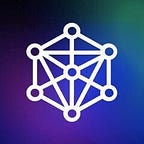Generating APIs for your business with Low-code/ No-code Platforms
Some low-code platform provides a set of predefined and customizable APIs that enable teams to integrate popular proprietary applications and build robust applications without the need for specialized and costly IT teams. Open source, low-code software solutions allow your company’s developers to create powerful, functional business applications without traditional coding knowledge. 🚀
A low-code development tool can lighten your load and handle most of the complexity for you, leaving you with only a basic understanding of how APIs work.
Canonic provides you with a single dashboard to manage your sources and APIs saving you the hassle of going to multiple platforms. 👯♀️
API anatomy 👩💻
When you publish your graph, which holds all the information necessary to model your database tables. Canonic automatically create basic CRUD APIs. This allows you to get a head to start on development and saves you time.
Moreover, Canonic also allows you to modify these basic APIs as well as create new ones. 🙌
You can also chain multiple APIs and webhooks together to create complex and dynamic workflows that integrate with a variety of 3rd party services.
The API graph is essentially a birds-eye view of your API and is represented through mutations, queries, and webhooks.
Let’s look at each one of them👇
Mutation Endpoints
Mutations are endpoints that mutate or change the data on the backend. There are some predefined mutations that are automatically generated by Canonic whenever you publish your graph.
You can modify these endpoints to augment them with your own business logic, or, alternatively create brand new endpoints to infinitely extend your backend to be incredibly complex and powerful. 👩🔧
Autogenerated Mutations
Certain mutations are automatically generated when you publish your graph, such as CREATE, UPDATE, and DELETE.
Query Endpoints
Queries are endpoints that simply fetch data from one or more of your database tables. They don’t modify any data and are simply used for reading data based on a subset of filters or parameters. There are some predefined queries that are automatically generated by Canonic whenever you publish your graph. 👯♀️
You can modify these endpoints to augment them with your own business logic, or, alternatively create brand new queries to read and filter data in a variety of custom dimensions and logic.
Webhooks
Webhooks allow you to trigger certain actions whenever an endpoint is triggered. They can be chained together as well as run in parallel to create complex workflows and operations.
We support a variety of 3rd party integrations. You can perform actions such as sending messages, triggering deploys, executing serverless functions, and much more. 💃
Best part, you can start today and explore for free! 🤩
